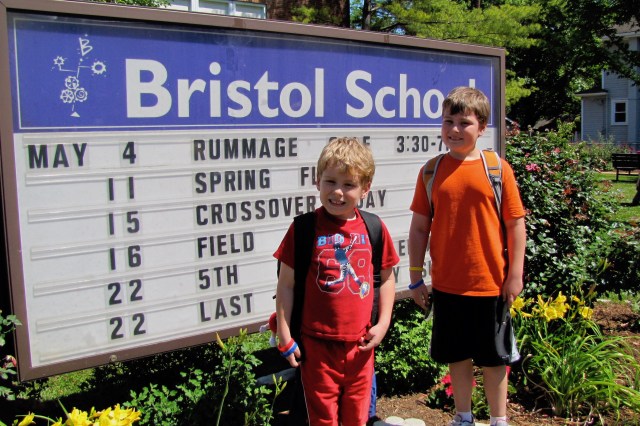
Just last week you had likely never heard the term “social distancing” and here you are, living it. As schools are closed, the kids are with you. Older kids will adjust to the new online virtual teaching world have likely long already been a part of their vocabulary.
But what about the younger ones, particularly the K-2 kids? Challenging indeed. Their teachers will be reaching out and continuing some kind of education through the coming weeks (months?), but let’s be realistic: You will likely find yourself in some kind of homeschooling situation. Here are some online resources for offline ideas to keep your little mind engaged:
1. Plan the Week. Depending on your situation, it’ll likely be necessary for you to get involved in the planning. Maybe a little, maybe a lot, depending on how prepared your child’s teachers are for this. It can just be an outline—listing what times you’re doing what activities. For tips on planning, here is an excellent resource from MissDecarbo.com.
2. Incremental Learning. In the classroom with other kids, your child can keep up a fairly “hectic” pace. But at home by themselves, with you wearing the teacher’s hat, it can be overwhelming. Each child’s pace will be different, some radically so. Be prepared to take things slow with lots of breaks.
3. Learning Games. So much about this age group is learning by doing, and the “by doing” part is often fun games. DifferentiatedKindergarten.com has a lot of excellent ideas, but an especially good one is the Free Worksheet-Free section where there are “no worksheets allowed!” There you’ll find great ideas, all of which you can do several times a week. Especially clever is the “practice rhyming” and the math games.
4. Closure-Specific Ideas. Kindergarten Chaos has a much-needed section of free online learning resources for the school closures we’re dealing with now. There’s a wealth of ideas found here, and most of these, like the previous point, really works for Grades 1 and 2 as well.
5. Social Skills. Perhaps the most important aspect of school at this age is the socialization of the child. This will be particularly hard when it’s just you and the child, but there are ways to work on it. Here’s a list from andnextcomesl.com of 50 Social Skills for Kids. Pick a few at a time and discuss what they mean and give examples. Try to implement them at the dinner table and through imaginary play – tea party with the stuffed animals, anyone?
6. Art and Music Projects. Make sure these two subjects are part of every day. It can be as simple as coloring books and getting chalk to turn the driveway into a mosaic. Dancing and singing to their favorite songs is a great activity. Combine art and music and make your own instruments.
7. Get Outside. Social distancing doesn’t mean you can’t take walks in the neighborhood. A really great idea is to set up an obstacle course in the back yard. Hit it a couple of times every day, timing them and challenging them to beat their best time!
The good news is that there are so many great resources out there. Here are 130+ Amazing Online Learning Resources from WeAreTeachers.com. It’s so much it can be overwhelming. Returning to point number 1, plan. You’re not a professional teacher, so don’t feel that you have to institute everything and know everything, but choose a path and keep it flexible.
Part II: Constructive Screen Time
Even if you’re at home you might also be busy working, and even parents need a break once in a while. So whatever your screen time rule for your child is, it inevitably is going to increase. But you can control it, and there are a few options that are especially perfect at this time.
1. Common Sense Media offers age-based reviews of all kinds of media, from movies and books to apps and games. They have “Best of” lists with app reviews of all kinds, and each includes notes on what some parents might find inappropriate, or not. So they simply give you the info you need to decide what’s right for your child.
2. Find a subscription service like Samsung Kids+ that will do the work for you. Services like these already curate and filter the content to ensure quality and high standards, so that you can feel good knowing your child will be getting appropriate content. With Samsung Kids, you can filter content by age or subject, so that you know your child is focusing on math or English games for their grade level. Or just let them have a break from learning with the games or videos, and you can still control screen time and set boundaries.
3. At Khan Academy you’ll find free video-based courses with interactive quizzes and tests so you can measure how well your child is doing. Proactive parents can even set up a curriculum that will help guide your child through the appropriate levels of learning.
4. Go Noodle! Let’s stay active! It helps them focus, reduce stress during these unusual times, and lets them just have fun. Go Noodle offers video content that prompts kids to get up and dance, party and move. Make sure you take a break with these fun and kid-focused dance videos!
5. ABCya offers grade-specific games for kids that range from math to language and more. You can view them by grade level, though there is no tracking available that some services offer (for example, Samsung Kids+ serves up parent reports so you can see how your child is doing).
Big picture: Keep your kids engaged in learning, as much as possible. And while a great book is always a perfect pastime, for kids who are itching to get on their devices, the options above might be a win-win, to keep the learning going and to keep a peaceful balance in your house!











